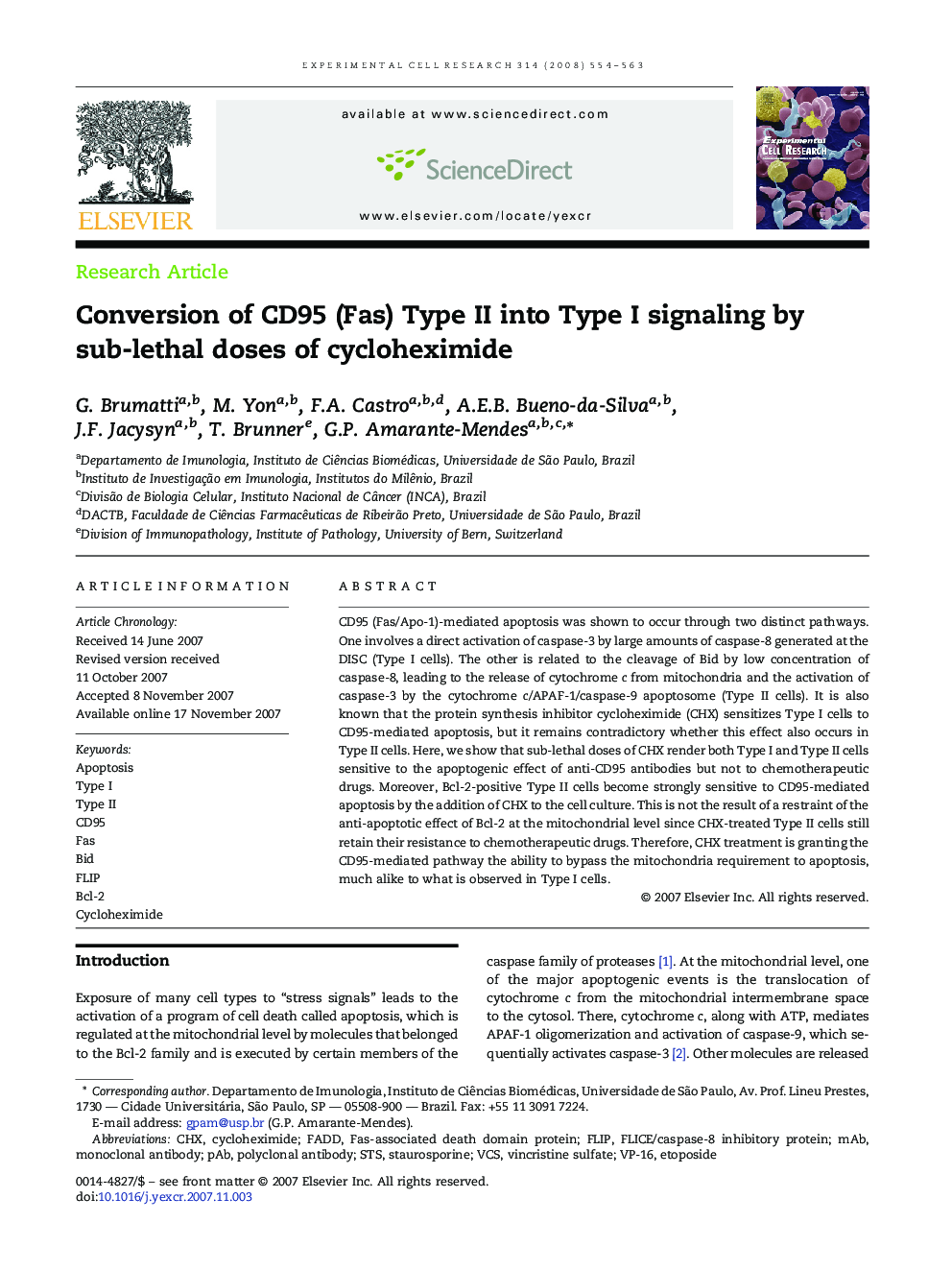| Article ID | Journal | Published Year | Pages | File Type |
|---|---|---|---|---|
| 2131629 | Experimental Cell Research | 2008 | 10 Pages |
CD95 (Fas/Apo-1)-mediated apoptosis was shown to occur through two distinct pathways. One involves a direct activation of caspase-3 by large amounts of caspase-8 generated at the DISC (Type I cells). The other is related to the cleavage of Bid by low concentration of caspase-8, leading to the release of cytochrome c from mitochondria and the activation of caspase-3 by the cytochrome c/APAF-1/caspase-9 apoptosome (Type II cells). It is also known that the protein synthesis inhibitor cycloheximide (CHX) sensitizes Type I cells to CD95-mediated apoptosis, but it remains contradictory whether this effect also occurs in Type II cells. Here, we show that sub-lethal doses of CHX render both Type I and Type II cells sensitive to the apoptogenic effect of anti-CD95 antibodies but not to chemotherapeutic drugs. Moreover, Bcl-2-positive Type II cells become strongly sensitive to CD95-mediated apoptosis by the addition of CHX to the cell culture. This is not the result of a restraint of the anti-apoptotic effect of Bcl-2 at the mitochondrial level since CHX-treated Type II cells still retain their resistance to chemotherapeutic drugs. Therefore, CHX treatment is granting the CD95-mediated pathway the ability to bypass the mitochondria requirement to apoptosis, much alike to what is observed in Type I cells.
